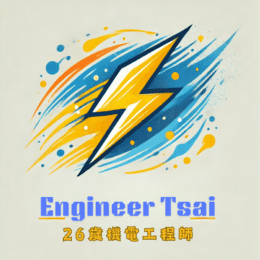Watch Now: How does AC Becomes DC – Secrets of Chargers!
Discover how chargers transform household AC into the DC needed for your devices. With clear explanations and demonstrations, learn the role of key components like transformers and rectifiers in ensuring efficient and safe charging. For answer
Why Convert AC to DC?
In modern life, nearly all electronic devices rely on chargers for energy. From smartphones to laptops, these devices predominantly operate on direct current (DC). However, household power supplies typically provide alternating current (AC). So how does a charger transform AC into DC? Let’s uncover the technology behind this essential process.
The Difference Between AC and DC
- Alternating Current (AC): The direction of current flow alternates continuously, creating a sine wave pattern, making it ideal for long-distance power transmission.
- Direct Current (DC): The current flows in a fixed direction, providing stable voltage, which is crucial for powering electronic devices.
Electronic circuits in devices like smartphones and laptops require a stable voltage and current to function correctly, necessitating the conversion of AC to DC.
The Basics of Converting AC to DC
The primary function of a charger is to convert fluctuating AC into stable DC through the following steps:
1. Step-Down Voltage
Household electricity typically operates at high voltage (e.g., 110V or 220V), while most electronic devices require low DC voltages like 5V, 9V, or 12V. A transformer inside the charger reduces the voltage to levels suitable for devices.
2. Rectification
The first step in converting AC to DC is rectification. A rectifier, made of diodes arranged in a bridge configuration, ensures that the current flows in one direction, transforming the AC wave into a unidirectional current.
3. Filtering
After rectification, the current still exhibits ripples and is not entirely stable. A filter capacitor smooths out the voltage fluctuations, reducing ripple and outputting a steadier DC.
4. Voltage Regulation
Even after filtering, minor voltage variations may remain. A voltage regulator ensures the output remains consistent and stable, delivering the precise voltage required by the connected device.
By understanding these steps, we can better appreciate how chargers enable our devices to operate efficiently and safely.

Components and Functions Inside a Charger
Modern chargers rely on several key components to efficiently convert and deliver power:
- Transformer: Reduces the input voltage from mains power.
- Rectifier (Diode Bridge): Converts AC into unidirectional current.
- Filter Capacitor: Smooths out voltage fluctuations.
- Voltage Regulator (IC): Stabilizes the output voltage.
- Control Chip: Adjusts output voltage and current to ensure optimal charging efficiency.
These components work together seamlessly to provide reliable performance and safeguard connected devices.
How Do Chargers Recognize Different Devices?
Smart Charging Technology
Modern chargers are equipped with intelligent recognition systems that dynamically adjust output voltage and current based on the connected device’s requirements. For example:
- Fast-Charging Protocols: Technologies like Qualcomm Quick Charge and USB Power Delivery enable communication between the charger and device, optimizing power delivery for faster and safer charging.
Built-In Protection Features
To prevent issues like overcharging, overheating, and short circuits, chargers incorporate multiple protection mechanisms. These safeguards ensure both the safety of the devices and the users, making modern chargers not only efficient but also highly reliable.

Applications and Future of Chargers
Applications
Chargers are integral to a variety of modern technologies, including:
- Consumer Electronics: Devices like smartphones, tablets, and laptops.
- New Energy Solutions: Electric vehicle (EV) charging stations.
- Smart Home Systems: Dedicated charging setups for smart home devices.
Future Trends
- Wireless Charging: Aiming to minimize cable dependency, wireless chargers offer enhanced convenience and flexibility.
- Higher Efficiency: Advanced materials like gallium nitride (GaN) are enabling smaller, more efficient chargers.
- Eco-Friendly Design: Efforts are being made to develop recyclable materials and energy-efficient chargers to reduce environmental impact.
Simple Experiment: DIY for how does AC to DC Conversion
Materials Needed
- Transformer (e.g., 220V to 12V)
- Bridge Rectifier (4 diodes)
- Capacitor (1000µF)
- LED Light
- Wires and Breadboard
Steps
- Connect the Transformer: Link the transformer to the mains supply to output low-voltage AC.
- Set Up the Rectifier: Use diodes to form a rectifier bridge, converting AC into unidirectional current.
- Add the Capacitor: Attach the capacitor to the rectifier to smooth out voltage fluctuations.
- Light Up the LED: Connect the LED to the circuit and observe its brightness changes.
This hands-on experiment offers an intuitive way to understand how alternating current is converted to direct current, highlighting the fundamental principles behind charger technology.

Conclusion and Further Reading
Chargers play a crucial role in converting alternating current (AC) into direct current (DC) through processes like voltage reduction, rectification, filtering, and regulation. This essential technology powers our everyday electronics and drives advancements in various industries.
Further Reading
- Mastering DC and AC Power: Everything You Need to Know
Explore the characteristics of AC and DC, their advantages, and limitations in various applications. - The Fundamentals of Circuits: Power, Wires & Load
Understand the core components of a circuit and how they work together to operate electronic devices. - Inside a Charger: Voltage Regulation and Overload Protection Explained (Coming Soon)
Learn how chargers ensure device safety through voltage stabilization and protection mechanisms. - How Fast-Charging Technology is Transforming Daily Life (Coming Soon)
Discover the principles behind fast charging and its profound impact on modern technology.
Stay connected! Subscribe to our blog for more engaging content on electrical technology. Have questions about chargers or related topics? Share your thoughts in the comments below—we’d love to hear from you!


